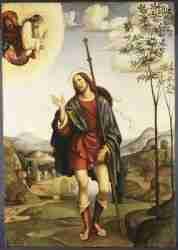
WELCOME!
to
The Chapel of St. Rocco

In September 1593, the plague epidemic in Malta came to an end. 3800 people died during the 15-month long great scourge. As a result, St. Rocco’s reputation as a protector of the plagued rose considerably.  Ħal-Balzan’s residents, who in 1592 numbered around 300 and were spread out among 60 or so homes, sought to express their gratitude to St. Rocco, guardian of the plagued.
Ħal-Balzan’s residents, who in 1592 numbered around 300 and were spread out among 60 or so homes, sought to express their gratitude to St. Rocco, guardian of the plagued.
Several churches were allegedly erected in honour of the same saint during those fifteen months, according to the historian Castagna, while the plague was raging in Malta and Gozo. This chapel in Balzan appears to have been constructed in 1593, which is supported by the inscription “Hoc opus fecit 1593” etched into the chapel’s roof.
It used to have a cemetery beside it and in front of it is the village cross.

Roch (lived c. 1348 – 15/16 August 1376/79) also called Rock in English, is a Catholic saint, a confessor whose death is commemorated on 16 August and 9 September in Italy; he is especially invoked against the plague. He has the designation of Rollox in Glasgow, Scotland, said to be a corruption of Roch’s Loch, which referred to a small loch once near a chapel dedicated to Roch in 1506.
He is a patron saint of dogs, invalids, of falsely accused people, bachelors, and several other things. He is the patron saint of Dolo (near Venice) and Parma, as well as Casamassima, Cisterna di Latina and Palagiano (Italy).
Saint Roch is known as “São Roque” in Portuguese, as “Sant Roc” in Catalan, as “San Roque” in Spanish (including in former colonies of the Spanish colonial empire such as the Philippines), as “San Rocco” in Italian, and “Santu Rokku” in Maltese